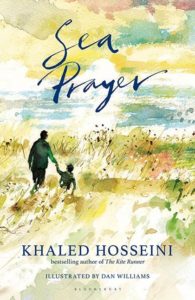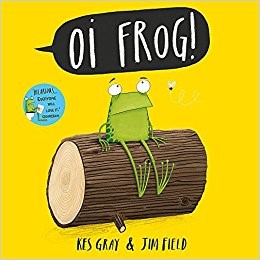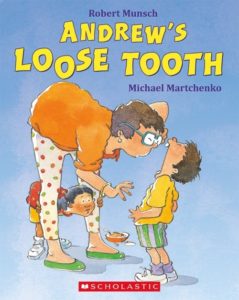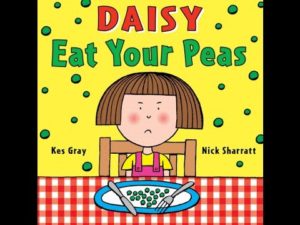| Recommended Reads | Download PDF |
Hosseini, Khaled & Williams, Dan (2018). Sea Prayer
London: Bloomsbury.
Recommended by Sissil Lea Heggernes
There is something about Khaled Hosseini’s hauntingly beautiful prose that leaves an enduring impression. His novels revolve around topics such as separation, betrayal, oppression and violence, while also evoking hope and showing the strength of love. In his debut picturebook, beautifully illustrated by Dan Williams, Hosseini takes us to Syria and the refugee crisis. The blurb filled me with both attraction and apprehension, as the father tells his son: ‘Hold my hand. Nothing bad will happen’, and I prepared myself for the worst. While waiting for the boat, the adult narrator draws us in with his tale of ‘the long summers of childhood’ on his grandfather’s farm. The weary refugees we see depicted in hopeless circumstances are given a voice as Hosseini provides them with a story we recognize, happy memories of moments with loved ones.
Dan Williams’ aquarelles are particularly well suited to the topic of war and loss, and, fittingly, money is donated from the sales to the UN Refugee Agency. The colours blend into each other. Quick pencil strokes leave an impression of haste. A storm is coming. Blurred scenes with few solid objects or clear-cut lines mirror the situation of the refugees. This creates a stark contrast to the story the father wants his son to remember, a past where cows were grazing in the field to the sounds of clanking cooking pots. Instead, his son has learnt that ‘dark blood is better news than bright’. The vivid colours of the old Syria turn grey and brown when the skies start spitting bombs. Starvation, burials and migration ensue and the deep, indifferent sea lies waiting.
Sea Prayer is suitable, albeit disturbing, reading for secondary ELT. It provides an insider’s view on a topic learners may only have seen on the news and through carefully mediated discussion will contribute to raising readers’ intercultural awareness. [end of page 51]
The book is slim, just 48 pages, and most language is accessible, and students could be asked to discuss how Williams’ illustrations support and extend the verbal text. Sea Prayer’s literary and artistic qualities and the theme of war and loss will appeal to teenagers and adults alike!
Sissil Lea Heggernes is a teacher educator at Oslo Metropolitan University, where she teaches literature and culture. She has extensive teaching experience in primary and secondary schools in Norway. Her publications include work on the role of intercultural communicative competence in the Norwegian ELT curriculum (Må vi snakke om demokrati? Om demokratiskpraksisiskolen [Do we have to talk about democracy? Democratic practices in schools], 2014) and articles in teachers’ journals. Currently, she is working on a PhD, which explores how challenging picturebooks can foster ELT students’ intercultural communicative competence.
Gray, Kes & Field, Jim (2014). Oi Frog!
London: Hodder Children’s Books.
Recommended by Mateja Dagarin Fojkar
Oi Frog! is a picturebook written by Kes Gray, who is well-known for his amusing storylines and silly rhymes. The book is illustrated by Jim Field, and together they make a perfect match – Field’s vivid illustrations bring this entertaining story to life – a story about a frog, who does not want to sit on a log, because she might get splinters in her bottom. A wise cat, who serves as frog’s mentor in the book, informs her that ‘it is not about being comfortable but about doing the right thing’. Throughout the story, the frog discovers where all the other animals sit: hares on chairs, lions on irons, foxes on boxes, cows on [end of page 52] ploughs, snakes on cakes, fleas on peas, etc. The story ends with the question that the cat was hoping the frog wouldn’t ask, namely, ‘What do dogs sit on?’ You can guess the answer and imagine the illustration on the last page!
Oi Frog! can be used in various ways in primary ELT. Students can join in reciting the rhymes; guess the rhymes by looking at the illustrations and of course, think of other rhymes about animals. As a post-listening activity, they can try to match all the animals to their special seats or they can create a similar book with their own rhymes and illustrations. For example, what do mice sit on? Ice? Or pigs? Do they sit on twigs? This can become a never-ending rhyming tale. In fact, the rhyming animal adventures do not stop with Oi Frog! If you want to know what happened to a curious dog, a goat and other animals you should read Oi Dog! – which won the ‘Laugh Out Loud Picture Book Award’ in 2017 – and the newest addition to the triptych, Oi Goat! which was created for the World Book Day in 2018.
Mateja Dagarin Fojkar is Assistant Professor of English Language Teaching Methodology at the Faculty of Education, University of Ljubljana, Slovenia and holds a PhD in teaching English to young learners. Her main research areas include the development of communicative and literacy skills in primary EFL learners. In her latest publication, she explored pre-primary teachers’ beliefs about FL learning and teaching. She can’t resist books in any format and often pretends to buy picturebooks for her children and then secretly reads them. [end of page 53]
Munsch, Robert & Martchenko, Michael (1998).
Andrew’s Loose Tooth
Toronto: Scholastic Canada Ltd.
Recommended by Ivana Cindrić
Andrew has a loose tooth and it causes him great distress. He screams in pain and cries for help. What follows is a series of hilarious attempts at getting the tooth pulled by his mother, father, and dentist. Andrew is left feeling sad and hungry. Luckily, his friend Louis comes around and comforts him, suggesting they call the Tooth Fairy. Breaking the stereotypical image of a Tooth Fairy, she arrives on a motorbike in a biker’s outfit. But her strength and tough looks are to no avail and she gives up in disbelief. Yet Louis doesn’t! He runs into the house, grabs a pepper-shaker, pushes Andrew’s head back and shakes it onto Andrew’s nose. AHHHHH-CHOO! Andrew sneezes so hard that the tooth flies out of his mouth all the way to the other side of town…
This funny story reaches out to all six-, seven-, and eight-year olds. The author, Robert Munsch, knows this very well as he usually relates his stories to real events, persons, or children. Therefore, the story provides a foundation for sharing experiences which can be supported by drawing, writing or speaking activities. The language is simple and repetitive, e.g. He reached out, picked up an apple, shined it on his shirt, took a bite and yelled… occurs three times throughout the text, indirectly inviting learners to join in the reading. Language teachers often look for books where content, topic, illustrations and language match the language and age level of learners. Andrew’s Loose Tooth is fitting for all of the mentioned categories. Containing elements of humour, surprise, shock, empathy and hope, this narrative calls for emphatic presentation using body language and eye contact. The mood and meaning can be communicated through voice, timing, intonation, and pitch. Therefore, teachers are [end of page 54] encouraged to have a go at story reading. Listening to the story told by Munsch himself (available online) can be a source of inspiration for teachers when developing their own storytelling styles.
Ivana Cindrić is an assistant professor at the Faculty of Teacher Education, University of Zagreb, Department of English Language Teacher Education. Her research interests are in the area of pre-service language teacher education, technology in ELT, teaching very young learners, and assessment. Her recent publication can be accessed at https://revije.ff.uni-lj.si/elope/article/view/7519.
Gray, Kes & Sharratt, Nick (2000). Eat Your Peas.
London: DK Publishing.
Recommended by Karoline Søgaard
Eat Your Peas, written by Kes Gray and illustrated by Nick Sharratt, is the first in a series about Daisy, and a year after its publication won ‘The Children’s Book Award’, an award voted for solely by children. Its starting point is a situation well-known to children: Daisy and her mom sit down to dinner but there is problem, there are peas on Daisy’s plate! The story is built up around the repetition of the same pattern: mom wants Daisy to eat her peas, Daisy repeats ‘But I don’t like peas’ and mom offers ever more extravagant rewards, if Daisy will only eat ‘the little green balls ganging up on her plate’. After four repetitions of the cycle, which leaves Daisy increasingly frustrated, she finally comes up with a solution: she will eat her peas if mom eats her Brussel sprouts. But here is the thing, mom doesn’t like Brussel sprouts. ‘Exactly’, Daisy exclaims! Mum sees Daisy’s point and the story ends with the two of them enjoying pudding together. This might explain why Eat Your Peas is so popular with children! Daisy exerts her right to decide what she puts in her mouth and in the process makes it clear that children and adults are not that different after all. [end of page 55]
Nick Sharratt’s characteristic illustrations use strong colors and clear depictions of the central objects. There is hardly any background and an almost one-to-one correspondence between text and image. When mom offers Daisy ninety-two chocolate factories and seventeen swimming pools we see exactly that!
Central vocabulary in the story are the things Daisy can have, her chores and the daily routines she can avoid, like cleaning her hamster out or brushing her teeth. The language is useful and includes the phrase ‘I don’t like’ and the ‘if – then’ pattern. The clear correspondence between text and illustrations, the simple language, the use of humour, the repetitious pattern of the story and the recognizable themes, makes this book highly suitable for young learners in a foreign language setting.
Karoline Søgaard is an associate lecturer in the department of Teacher Training at University College, Copenhagen. She has a special interest in using picturebooks to teach language and intercultural competence to young learners. She has recently been involved in a collaborative research project to develop teaching units based on current understandings of successful approaches to teaching English to young learners while integrating a plurilingual perspective. She has co-authored Let’s Get Started (2017), a book about using picturebooks in ELT, aimed at teachers of English in Danish primary schools.





